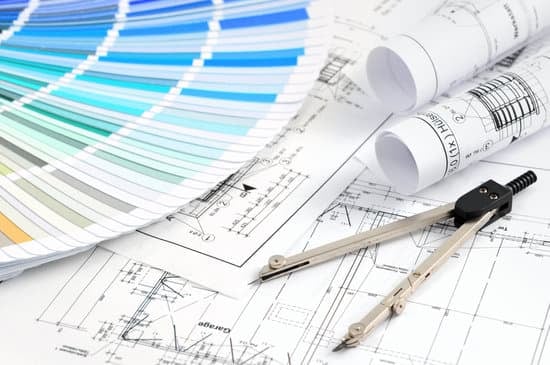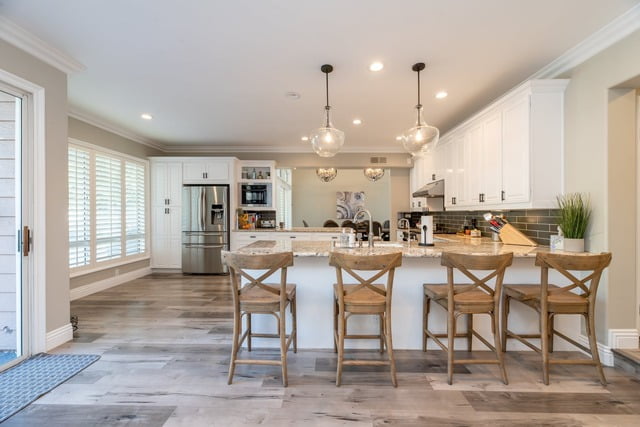Refinancing your house to make home improvements can be an attractive option for homeowners looking to update their living space or increase the value of their property. However, it’s important to fully understand the benefits and considerations before making this financial decision.
In this article, we will explore the various factors that should be taken into account when deciding whether or not to refinance your house for home improvements. From assessing your current financial situation and available resources to evaluating the scope of renovation projects that align with your refinancing goals, we will provide a comprehensive guide to help you make an informed decision.
Furthermore, we will delve into different loan programs and their potential impact on your home equity, as well as weigh the costs and benefits through calculating potential savings and future return on investment. It is crucial to determine if refinancing for home improvements is a wise move by assessing your home’s market value. Timing is also significant, as locking in a low interest rate can maximize savings potential.
Lastly, we will discuss the importance of having a comprehensive financial plan that considers long-term goals and debt management strategies. Consulting professionals such as mortgage advisors and contractors can play a vital role in guiding you through the refinancing journey. Additionally, we will shed light on the risks and potential downsides associated with this decision.
By the end of this article, you will have all the necessary information to answer the question: “Should I refinance my house to make home improvements?” It is crucial to make an informed decision that aligns with your financial goals and overall well-being.
Exploring Your Current Financial Situation
When considering whether to refinance your house for home improvements, it is crucial to thoroughly assess your current financial situation. This involves evaluating your options and understanding the available resources you have at your disposal. By doing so, you can make an informed decision about whether refinancing is the right choice for you.
One important factor to consider is your credit score. Lenders often view borrowers with higher credit scores as less risky, which means they may offer better interest rates and terms. If you have a good credit score, refinancing for home improvements could be a viable option. On the other hand, if your credit score is low, you may have limited access to favorable refinancing terms or might not qualify at all.
Additionally, take a close look at your debt-to-income ratio (DTI). Lenders typically prefer borrowers with a DTI of 43% or lower. If yours exceeds this threshold due to existing debts, such as student loans or car payments, you may face more challenges in securing a favorable refinancing option. However, if you have been consistently making on-time payments and have improved your financial situation since purchasing your home, lenders may still consider you a suitable candidate for refinancing.
It’s also important to evaluate the equity in your home. Equity refers to the difference between the property’s market value and the outstanding mortgage balance. The more equity you have built up in your home, the more financing options will be available to you when it comes to making improvements. Moreover, having a larger amount of equity enables you to potentially secure lower interest rates on refinanced loans.
| Financial Factor | Considerations |
|---|---|
| Credit Score | Affects eligibility for favorable terms and interest rates |
| Debt-to-Income Ratio (DTI) | A high DTI can limit access to refinancing options |
| Equity in Home | Influences the amount of financing available and interest rates |
By carefully assessing your current financial situation, including your credit score, DTI, and home equity, you will be better equipped to determine whether refinancing for home improvements is a viable option for you. Remember, every individual’s financial circumstances are unique, so it is essential to thoroughly evaluate your situation before making a decision.
Evaluating the Scope of Home Improvements
When considering refinancing your house to make home improvements, it is important to evaluate the scope of the renovations you want to undertake. Determining the right renovation projects for your refinancing goals involves assessing the current condition of your home and prioritizing which areas need improvement. This section will guide you through the process of evaluating the scope of home improvements and selecting the right renovation projects.
Assessing Your Current Home
Before diving into any renovations, it is essential to thoroughly assess your current home. Take a walk around your property, both inside and outside, and make note of any areas that require attention. Look for structural issues, outdated features, or areas that may benefit from modernization. Additionally, consider factors such as energy efficiency upgrades or improvements that could increase the value of your home.
Prioritizing Renovation Projects
Once you have identified areas in need of improvement, it’s time to prioritize the renovation projects based on your refinancing goals. Consider which projects will have the highest impact on improving your quality of life and increasing the value of your property. It may be helpful to categorize them into “must-haves” and “nice-to-haves” based on their urgency or importance.
It’s also wise to consider any potential obstacles or limitations that may affect certain renovation projects. This could include budget constraints, time limitations, or zoning regulations in your area. By taking all these factors into account, you can establish a clear plan for tackling each project within your refinancing timeline.
Seeking Professional Advice
If you are unsure about which renovation projects would be most beneficial for your refinancing goals, seeking advice from professionals is highly recommended. Contractors and interior designers can provide valuable insights into what improvements are popular in the market or offer suggestions based on experience. Additionally, mortgage advisors can help you understand how certain renovations may impact home value and advise on the best refinancing options for your specific situation.
By evaluating the scope of home improvements and determining the right renovation projects for your refinancing goals, you can make informed decisions about how to maximize the value of your property. Taking the time to assess your current home, prioritize projects, and seek professional advice will ensure that the renovations you undertake align with your long-term financial objectives.
Understanding Refinancing Options
Refinancing your house to make home improvements can offer numerous benefits, but it’s important to understand the different refinancing options available to you and how they may impact your home equity. Analyzing these loan programs will help you make an informed decision about which option aligns best with your goals.
One popular refinancing option is a cash-out refinance. This type of loan allows you to borrow more than your outstanding mortgage balance and receive the difference in cash. The additional funds can then be used for home improvements.
Cash-out refinancing can give you access to a significant amount of money, but it’s important to carefully consider the impact on your home equity. By borrowing more than the current value of your home, you run the risk of decreasing your equity if property values decline.
Another refinancing option that may be suitable for funding home improvements is a home equity line of credit (HELOC). With a HELOC, you’re able to borrow against the equity in your home up to a certain limit.
This revolving line of credit allows you to withdraw funds as needed for renovations while only paying interest on the amount borrowed. A HELOC is usually an adjustable-rate loan, so it’s essential to closely examine potential interest rate increases over time.
Lastly, a renovation loan or FHA 203(k) loan could be considered if you’re planning extensive renovations or repairs for your property. These loans are designed specifically for financing both the purchase and rehabilitation of homes in need of substantial updates. Renovation loans often include the cost of repairs or upgrades into the mortgage itself, eliminating the need for separate financing and simplifying repayment.
When evaluating different refinancing options, it’s crucial to consider factors such as interest rates, fees, repayment terms, and eligibility requirements. You should also consult with lenders or mortgage advisors who can provide personalized advice based on your financial situation and goals.
Weighing the Costs and Benefits
One of the most important factors to consider when deciding whether to refinance your house for home improvements is weighing the costs and benefits. Calculating the potential savings and future return on investment can help you determine if refinancing is a wise financial move. Here are some key considerations to keep in mind:
- Cost of Refinancing: Before making any decisions, it’s crucial to understand the costs associated with refinancing. These may include closing costs, appraisal fees, title insurance, and origination fees. Take into account these expenses when evaluating the potential savings from refinancing.
- Lower Interest Rates: Refinancing your mortgage can provide an opportunity to secure a lower interest rate than what you currently have. A lower interest rate means lower monthly mortgage payments, potentially leading to substantial savings over time. Use online calculators or consult with a mortgage advisor to estimate how much you could save.
- Return on Investment (ROI): Consider how the home improvements will impact the value of your property. Will they significantly increase its worth? Home renovations such as kitchen remodels or adding an extra bathroom often yield a higher return on investment compared to other projects like landscaping or pool installation. Research local real estate market trends and speak with real estate professionals for insights into which renovations provide the best ROI in your area.
To further analyze cost-benefit ratios, create a pros and cons list specific to your situation. Evaluate different scenarios by considering variables like monthly mortgage payments before and after refinancing, estimated return on investment from home improvements, potential increase in property value, and any tax benefits that may apply.
By carefully calculating potential savings and future return on investment, you can make an informed decision about whether it is financially advantageous for you to refinance your house for home improvements.
Assessing Your Home’s Market Value
Determining the market value of your home is an important step in assessing whether refinancing for home improvements is a wise financial move. The market value of your home plays a crucial role in determining how much equity you have and how much you can potentially borrow through a refinancing loan.
To assess the market value of your home, there are several methods you can consider:
- Online Valuation Tools: Many websites offer free online valuation tools that provide estimates of your home’s market value based on public records data and recent sales in your area. While these tools can give you a rough estimate, they may not be entirely accurate and should be used as a starting point.
- Comparative Market Analysis (CMA): A CMA is conducted by a real estate agent who will compare your home to similar properties that have recently sold in your neighborhood. This analysis takes into account factors such as location, size, condition, and amenities to provide a more accurate estimate of your home’s market value.
- Professional Appraisal: Hiring a professional appraiser is another option for determining the market value of your home. An appraiser will conduct an in-person inspection of your property and use industry standards to assess its value. While this method requires an upfront cost, it provides an objective evaluation that lenders often rely on.
Once you have determined the market value of your home, compare it to the amount you owe on your current mortgage and any additional costs associated with refinancing. This will help you understand how much equity you have available to tap into for financing your home improvements.
Remember that the ultimate goal of refinancing for home improvements is to increase the value of your property and potentially earn a return on investment when you sell it in the future. Therefore, it’s essential to ensure that the potential increase in your home’s value justifies the costs and risks associated with refinancing.
By assessing your home’s market value before deciding to refinance for home improvements, you can make an informed decision based on the financial feasibility of your goals and determine if it is the right move for you.
Locking in a Low Interest Rate
One of the key considerations when refinancing your house for home improvements is timing your decision to lock in a low interest rate. By securing a favorable interest rate, you can maximize your savings potential and reduce the overall cost of your loan.
Interest rates fluctuate over time, influenced by various economic factors such as inflation, monetary policy decisions, and market conditions. Therefore, it is essential to keep an eye on the interest rate trends in order to make an informed decision about when to refinance.
To determine whether it is a good time to refinance, you can monitor mortgage rates regularly through financial news outlets or consult with mortgage advisors who have access to real-time data. It’s important to remember that even a small decrease in interest rates can lead to significant savings over the life of your loan.
When considering when to lock in your interest rate, it’s also crucial to take into account any fees or costs associated with refinancing. These may include appraisal fees, closing costs, and origination fees. By factoring these expenses along with the potential long-term savings from a low interest rate into your calculations, you can determine if refinancing for home improvements makes financial sense for you.
In summary, locking in a low interest rate is a crucial step in maximizing your savings potential when refinancing for home improvements. By carefully monitoring interest rate trends and consulting with professionals who specialize in mortgage advice, you can time your refinancing decision strategically and secure a favorable rate that will result in significant cost savings over time.
| Month | 30-Year Fixed Rate | 15-Year Fixed Rate |
|---|---|---|
| January 2022 | 3.2% | 2.7% |
| February 2022 | 3.1% | 2.6% |
| March 2022 | 3.0% | 2.5% |
The Importance of a Comprehensive Financial Plan
When considering whether to refinance your house to make home improvements, it’s essential to have a comprehensive financial plan in place. This section will discuss the importance of considering long-term financial goals and debt management strategies when making this decision.
Setting Long-Term Financial Goals
Before deciding on refinancing for home improvements, it’s crucial to establish your long-term financial goals. Consider what you hope to achieve in the coming years, such as retirement savings, paying off other debts, or funding your children’s education.
By having a clear understanding of your objectives, you can evaluate whether using equity from refinancing aligns with these goals. It’s also essential to consider how potentially increasing your mortgage debt may impact your ability to meet these goals.
Managing Debt Effectively
Refinancing can provide an opportunity to consolidate other higher-interest debts into one lower-interest mortgage payment. This can be particularly beneficial if you carry significant credit card or personal loan balances. By incorporating these debts into your refinanced mortgage, you may be able to reduce monthly payments and streamline your debt management process.
However, it’s important to approach this strategy with caution. Consolidating debts should not encourage you to accumulate new debt or overspend on home improvements beyond what is necessary. Evaluating and managing your overall debt load is critical in maintaining a healthy financial situation and avoiding excessive interest payments over time.
A comprehensive financial plan takes into account both short-term needs and long-term goals while also considering potential risks and unexpected expenses that may arise during the refinancing journey. By thoroughly assessing your current financial situation and future aspirations, you can make an informed decision on whether refinancing for home improvements aligns with your overall financial strategy.
Consulting with Professionals
The Role of Mortgage Advisors
When considering whether to refinance your house to make home improvements, consulting with a mortgage advisor can provide valuable guidance and support throughout the process. A mortgage advisor is a professional who specializes in home financing and can help you navigate the complexities of refinancing.
One of the key roles of a mortgage advisor is to assist you in understanding your refinancing options. They can explain the different loan programs available to you, such as cash-out refinancing or home equity loans, and help you determine which option aligns best with your financial goals and needs. Additionally, they can review your current mortgage terms and assess whether refinancing would provide significant benefits in terms of interest rate reduction or lowering monthly payments.
Furthermore, a mortgage advisor can guide you through the application and approval process. They understand the documentation required by lenders, such as income verification, credit history, and property appraisal reports. By working closely with a mortgage advisor, you can streamline the application process and increase your chances of securing favorable loan terms for your home improvement project.
The Role of Contractors
In addition to consulting with a mortgage advisor, involving contractors early on in your refinancing journey is essential when planning for home improvements. Contractors play a crucial role in helping you evaluate the feasibility and cost-efficiency of your desired renovation projects.
Working together with contractors allows you to obtain professional opinions on the scope of renovations that are achievable within your budget. They can provide accurate cost estimates, suggest alternative materials or designs that could save money without compromising quality, and advise on any potential challenges or limitations associated with specific renovation ideas.
Moreover, contractors have access to reliable subcontractors who specialize in various trade skills required for home improvement projects. This network enables them to assemble skilled teams efficiently while ensuring that the work is completed within agreed timelines.
By collaborating with contractors during the refinancing process, you not only benefit from their expertise but also gain insights on how to maximize the return on investment for your chosen home improvements. Their input can help you prioritize renovations that will enhance the value of your property and align with future market trends, ultimately ensuring a wise financial move.
Overall, consulting with both mortgage advisors and contractors is crucial when contemplating refinancing your house for home improvements. Their expertise and professional advice can provide you with the necessary information to make informed decisions that align with your financial goals and ensure a successful outcome for your project.
Assessing the Risks and Potential Downsides
Refinancing your house to make home improvements can offer several benefits, but it’s important to recognize the potential risks and downsides as well. Before making the decision to refinance, it’s crucial to thoroughly assess the potential pitfalls involved.
One of the primary risks of refinancing for home improvements is that you may end up paying more in the long run. While refinancing can provide you with immediate funds for renovations, it typically extends the term of your mortgage and increases the overall interest payments. It’s essential to carefully calculate the total cost over time and determine if the increase in expenses is worth the investment in home improvements.
Another potential downside is that refinancing may reduce your home equity. Refinancing often involves taking out a new loan and using your home as collateral. This means that if property values decline or you encounter financial difficulties, you could potentially owe more on your mortgage than what your home is worth. It’s important to consider how this could affect your financial situation in the future and whether or not you are comfortable with taking on additional debt.
Additionally, refinancing for home improvements may involve fees and closing costs. These expenses can add up quickly and diminish any potential savings from lower interest rates or increased property value. It’s crucial to factor in these costs when evaluating the overall financial impact of refinancing.
| Assessment Risks | Potential Downsides |
|---|---|
| Paying more in the long run | Reduction of home equity |
| Deterioration of financial situation | Fees and closing costs |
It’s important to carefully consider these risks and downsides before deciding to refinance for home improvements. While there can be significant benefits, it’s crucial to make an informed decision that aligns with your long-term financial goals and overall financial situation.
Consulting with professionals such as mortgage advisors and contractors can also provide valuable insights as you navigate this process. By thoroughly evaluating the potential risks and downsides, you can make a well-informed decision that best suits your needs.
Conclusion
In conclusion, deciding whether to refinance your house to make home improvements is a complex decision that requires careful consideration of various factors. Throughout this article, we have explored the benefits and considerations of refinancing for home improvements, assessed your current financial situation, evaluated the scope of renovation projects, and analyzed different refinancing options.
When making this decision, it is crucial to weigh the costs and benefits by calculating potential savings and future return on investment. Additionally, assessing your home’s market value and locking in a low interest rate can maximize your savings potential. It is also important to consider long-term financial goals and debt management strategies as part of a comprehensive financial plan.
While consulting with professionals such as mortgage advisors and contractors can provide valuable insights, it is essential to recognize the potential risks and downsides associated with refinancing for home improvements. These include accruing additional debt, potential loss of equity if property values decrease, and possible delays or unexpected costs during the construction process.
Ultimately, determining whether to refinance your house for home improvements should be based on an informed decision that aligns with your financial goals and priorities. By carefully considering all the factors discussed in this article and seeking guidance from professionals when needed, you can make a well-informed choice that best suits your needs.
Frequently Asked Questions
Is it worth refinancing to remodel?
Refinancing to remodel can be a smart financial move for homeowners, but it is important to carefully consider the costs and benefits before making a decision. One key factor to consider is the interest rate; if you can secure a lower interest rate through refinancing, it could potentially save you money in the long run. Additionally, if the home improvements increase the value of your property, refinancing may be worth it as it could provide a return on your investment when you eventually sell your home.
However, homeowners should weigh these potential benefits against the costs associated with refinancing such as closing costs and any prepayment penalties. It’s also vital to have a clear plan for how funds will be used for remodeling projects to ensure they will genuinely enhance your living space or improve its market value.
What is not a good reason to refinance?
Using refinancing solely to fund an extravagant lifestyle or unnecessary expenses is generally not considered a good reason. Refinancing should usually be done with a well-thought-out purpose and goals in mind rather than simply accessing cash for indulgences like vacations or luxury items that may not have long-term value.
Not only does using refinanced funds irresponsibly risk increasing debt and monthly mortgage payments unnecessarily, but it can also jeopardize your financial stability if repayment becomes an issue down the line. It is typically more prudent to explore other options for financing such discretionary purchases that won’t put your home at risk or negatively impact your long-term financial health.
Is it wise to use home equity for home improvements?
Utilizing home equity for home improvements can be a wise decision under certain circumstances. Home equity refers to the difference between the current market value of your property and any outstanding mortgage balances. When utilizing this equity, homeowners essentially borrow against their own stake in their property. This method of funding improvement projects can bring several advantages, including potential tax benefits on interest paid for home equity loans or lines of credit.
Moreover, using home equity financing may offer lower interest rates compared to alternative lending options such as personal loans or credit cards. However, it is essential to exercise caution and ensure a realistic assessment of your ability to repay any borrowed funds. As home equity is tied directly to the value of your property, over-borrowing or mismanaging these funds can put your home at risk if you face financial difficulties in the future. Therefore, it’s wise to carefully evaluate whether using home equity for improvements fits within your overall financial plan and budget.

I’m thrilled to have you here as a part of the Remodeling Top community. This is where my journey as an architect and remodeling enthusiast intersects with your passion for transforming houses into dream homes.





